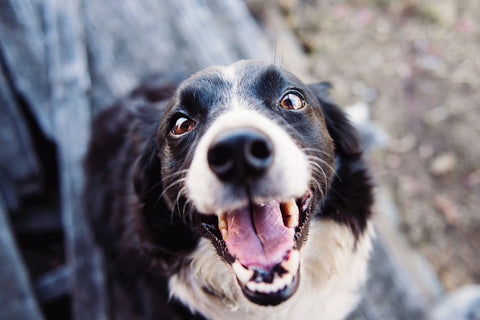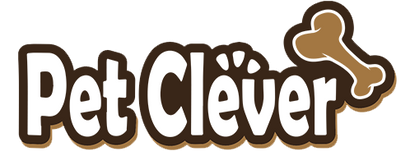My Dog Smiled! What Does It Mean?

Have you ever seen one of those viral videos on the internet of a dog smiling from ear to ear? If not then I wish you did! There is nothing more precious than seeing a cute little pooch gleaming at you so happily. Maybe you haven’t noticed but almost all of us have seen our dogs smile, in one way or another. We all have seen their upturned mouth every time we open the door or ask them to go to the dog park, but are they really smiling because? Or is this just a case of anthropomorphizing or the projection of human emotion into our dogs.
Rather than asking if your dog really smiled, you should ask yourself, “Why do dogs smile?” Apparently, there are certain dog body languages that have meanings like yawning, staring, and also smiling. Dog smiling is a real phenomenon that occurs commonly and normally within canines. If you want to know the reason why dogs smile, then read on further below.
Is my dog happy that’s why he smiled?
Some dog trainers and experts say that it maybe it is just a coincidence that dogs smile whenever they are doing something that makes them happy. However, some scientists also claim that dogs really do smile whenever they are happy. A group of neuroscientists in 2012 claimed that animals – including dogs, all have emotions and consciousness.
Humans can project their emotions directly through body language. For example, we cry or frown when we are sad, or smile when we are happy. The same cannot be said for dogs. Unlike human beings, dogs have several unique ways of showing how they feel. If ever you caught your dog smiling, it does not directly mean that he is happy or expressing happiness for something. Dogs use their bodies to express happiness, but smiling is not included in one of them. A canine equivalent of showing happiness is through a wagging tail, a bouncing body, and a facial expression that shows relaxed ears, mouth and eyes. Maybe we can think of it as a ‘smile’ because whenever a dog is happy, his facial expressions are relaxed, causing his mouth to open or making the corners of his mouth turn upwards, which somehow results in a smile. Therefore, it is safe to say and claim that indeed, a dog smiling is an indication that he is happy. Moreover, a dog smile means that your dog is contented and feels loved.
Isn’t it cute how dogs show their happiness? But be careful! Some dog smiles are not exactly what they seem. A dog smile could also mean a variety of things aside from expressing joy and happiness. There are certain types of ‘dog smiles’ that you should know as a responsible dog owner. Read more below.
Types of dog smiles

With the question answered that dogs do indeed smile, it is also important to note that not all dog smiles mean that they are happy. There are three meanings whenever our dog shows us their teeth; and each one has a specific emotion and explanation.
The Smile
Already explained earlier, the smile is easily recognizable when you see one. This is when the dog feels relaxed, contented, happy, and loved. When your dog a dog is smiling to express happiness, he is usually relaxed and you will usually see an upward curl in the corner of the dog’s mouth. This basically means that your dog feels safe and happy.
Moreover, there are certain breeds of dogs that look like they are smiling always but it is just a part of their facial appearance. A Shiba Inu dog will always look like they are putting out a giant smile always or a Pug will seem like it is always smiling but it only looks that way because of their ‘smushed’ faces.
The Grin
Unlike the smile, the grin represents something else in a dog’s emotion. If a dog is grinning, he will lift the front part of his mouth, right below the nose, and will expose his front teeth or incisors. A grin like this will most likely mean that the dog is showing a gesture of fear, awkwardness, and submission. This ‘submissive grin’ as it is usually called commonly happens when the dog encounters or meets a more dominant or bigger dog. Or whenever a new situation happens and the dog is not sure exactly what to do. Think of it as a human counterpart of shrugging.
Every time you encounter this expression of your dog, try to consider the full context of the situation. For example, your dog could be grinning at the dog park because it is afraid of the other larger dogs around him, in which case you should directly act on it and make a decision that would be best for your dog and you. Just remember that a dog grin is not exactly all bad and all good.
The Snarl
This is totally different from the grin and the smile for this is a defensive act known to all dogs. You have probably seen this expression of your dog, lifting up his front lip with the eyebrows crossed against each other, and then continuously snarling – hence the name. Typically, this is done by dogs as a warning or as a sign of being defensive and attacking.
Dogs use this expression more often than the two mentioned above. For example, whenever they would feel disturb when eating or when they feel protective of their food, they would snarl. Sometimes, a snarl is also a means of showing other dogs that he is the boss and therefore, more dominant in a certain area.
The bottomline here is that, you as a dog owner know your dog best. You know his expressions, habits, and quirks. At the same time, you should also be aware that there are some traits and body languages that are shared by all canines. Make sure to remember these and always love your dog! Be sure to keep them comfortable with a nice bed for dogs.
Leave a comment
Comments will be approved before showing up.

